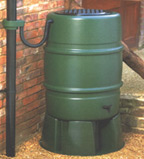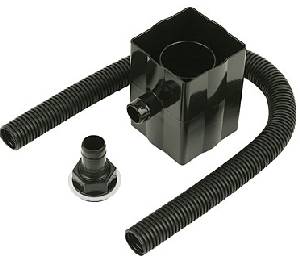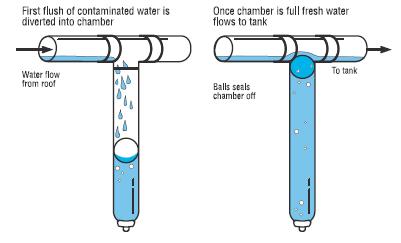Rainwater collection is one of the easiest ways you can save water, money, and energy. Whether collecting rain in an old dustbin, a water butt, or filling a 5,000 gallon tank under your home, there is something that everyone can do. Depending on the size of your home and the amount of rain in your region, it is possible to harvest large amounts of rain water and therefore make considerable savings on your water bill quickly covering any initial expenditure.

Benefits of Rainwater
Rainwater is much better for your garden than the treated drinking water that comes from your tap, and can be used free of hosepipe bans and other water use restrictions. Also rainwater is a renewable resource whereas the water from your tap often is not. If more water is drawn from an underwater lake for example than can be replaced by the rain then that is not sustainable.
Collecting Rainwater

The most basic rainwater harvesting system uses a simple Rainwater Diverter (available from just £8.99 from the REUK Shop) connected to a water butt or other water storage vessel. The collected water can then be used in the garden with a watering can, or directly via a hosepipe if the stored water is higher than the area to be watered.
Removing Contaminants From Collected Rainwater
Rainwater falls free of contaminants from the sky, so as long as your roof is not covered in debris, the water can be used untreated in your garden. It is however best to use a so called first flush device to filter out any bird droppings, leaves, and dust etc that would otherwise fester in the water you save if you intend to collect a lot of rainwater and store it for long periods of time.
Undesirables tend to appear in the first flush of water coming down the down pipe from the roof when it starts to rain, and so for a large rooftop rainwater harvesting system that stores a lot of rainwater, the first fixed volume of rain collected should be diverted away from your clean water tank. If one gallon of water is diverted away for each 100 square feet of roof area, the water subsequently collected will be essentially free of debris and contaminants.

Greywater
As well as collecting rainwater it is also possible to collect and reuse greywater such as old bath water, water from the washing machine, and so on. This can be treated and used to irrigate plants in the garden helping you to save water.